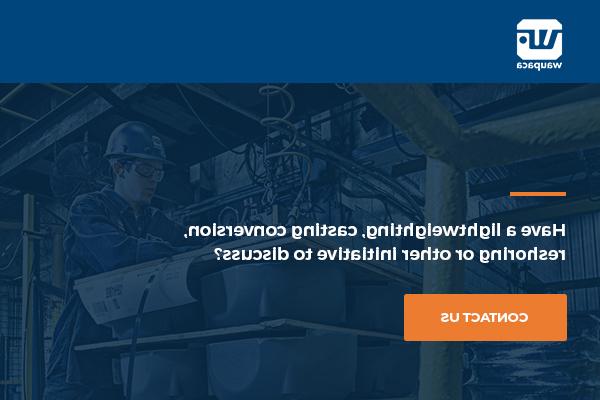AEM讨论了2021年值得关注的五大制造业趋势
这个员工 | 紧凑的设备
AEM讨论了2021年值得关注的五大制造业趋势
Both the immediate and long-term future of the 制造业 industry will be defined by the development of a number of ever-evolving and prominent trends. 这些趋势将在2021年(和2020年)产生重大影响, 在很多情况下, 除了), so it’s critically important for manufacturers to develop a keen understanding of what they are, 它们将如何随着时间的推移而增长, 以及它们将如何影响这个行业及其所服务的客户.
考虑到这一点,让我们来看看2021年值得关注的五大制造业趋势:
COVID-19与员工安全
It almost goes without saying that workplace 安全 and compliance with CDC guidelines and OSHA regulations (along with local 安全 measures) will remain front of mind for manufacturers as 2021 gets under way. 随着COVID-19病例在世界许多地区呈上升趋势, organizations will need to continue to be vigilant in their efforts to protect employees. 这样做, 然而, requires a significant investment of time effort and resources on the part of company leaders.
While an efficient rollout of an effective vaccine for COVID-19 would bode well for an eventual return to normalcy for the 制造业 industry, 这种推出的影响在一段时间内不会被感觉到. 在此期间, 各组织将需要继续在工作场所实行社交距离, 限制访客使用设施, encouraging the practice of good hygiene and ensuring employees are healthy and fit for work before allowing them on the job.
自COVID-19大流行在美国肆虐以来已经快一年了.S., and it remains a major challenge for manufacturers across the country and around the world. 虽然公司确实有应对病毒的计划和协议, adhering to them and ensuring the health and well-being of employees is — and will continue to be — no small task.
连接的劳动力
The desire to equip workers with technology capable of stay connected and collaborate from a distance has long been on a trend on the rise within the 制造业 industry. As older generations continue to leave the workforce and are replaced by younger employees, 制造业大数据时代的兴起初具规模, finding tools and technologies to make an increasingly spread-out and remote workforce as productive as possible is a top priority for companies today.
正如麦肯锡最近的一篇文章所解释的那样, the ongoing COVID-19 pandemic has led to an increased reliance on digital collaboration to establish and maintain a connected 制造业 workforce. 更加强调安全和工作流程的变化, 为了保持社交距离,尽量减少身体接触, has led organizations of all types and sizes to adopt cutting-edge ways to allow for workers to communicate and interact virtually.
While the widespread impact of the pandemic has caused this trend (and the adoption rate of related tools and technologies) to grow, it remains critical for manufacturers to provide training and resources to employees as they try to maximize productivity from afar. 为什么? 因为这样做会随着时间的推移而得到回报. 根据麦肯锡, “by digitizing processes to improve equipment management and optimize physical assets, digital collaboration tools give manufacturers ways to boost productivity while enhancing quality.” And those who do it first — and well — will achieve a significant competitive advantage.
物联网(IOT)
物联网(IoT)长期以来一直是制造业关注的一个趋势, 今年也不例外. 随着时间的推移,它变得越来越突出,越来越普遍, IoT technology will drive value for the industry by allowing organizations to make measured, informed decisions using real-time data in an effort to increase efficiency and positively impact their bottom lines.
根据MPI集团最近进行的一项研究, approximately 31% of 制造业 production processes now incorporate smart devices and embedded intelligence. 此外, more than one-third of manufacturers have established plans to implement IoT technology into their processes, 32%的企业计划将物联网技术嵌入其产品中.
IoT technology offers both remote monitoring and predictive maintenance capabilities (see below for more on predictive maintenance), making it even more valuable for organizations looking to maintain visibility of equipment performance from afar. 随着2019冠状病毒病大流行在2021年继续影响该行业, IoT technology will continue to be a go-to for manufacturers looking to maintain efficiency and productivity.
本地化生产和近外包
The rise of customization and personalization has given way to large opportunities for manufacturers willing — and perhaps more importantly, 能够在当地经济中取得成功. 通过重新思考产品走向公众的方式, 组织可以创建一个更小的生态系统, 灵活的工厂位于现有和潜在客户附近.
制造商习惯于从全球的角度考虑问题. 然而, 将他们的关注点转移到地方层面, 他们也许能更好地满足不断变化的需求, 他们所服务的市场的需求和偏好. 消费者非常清楚地表明,产品的真实性很重要, and a localized approach to 制造业 is proving to be among the most effective ways to for organizations to respond accordingly.
COVID-19的影响也不容忽视. 大流行导致制造商重新评估和重新考虑采购, largely due to supply chain disruptions (especially in the earliest days of COVID-19). 结果是, manufacturers have made a concerted effort to bring their operations closer to where their offerings are sold, and there has been an increasing desire on the part of many companies to source raw materials from domestic suppliers. 所有 of this is being done in an effort to avoid pandemic-related disruptions and support the U.S. 经济在这个不确定的时期.
预见性维护
It’s no secret the ability for manufacturers to predict impending equipment failures and – more importantly – prevent equipment downtime is incredibly impactful to their bottom lines. Advancements in technology now allow organizations to do just that (and much, much more).
的好处, 根据EAM-Mosca公司最近的一篇博客文章, 展示为什么预测性维护(PM)对今天的组织如此有价值. PM帮助公司:
- 降低成本
- 更少的失败
- 尽量减少计划停机时间
- 优化零件交付
然而,有效地进行预测性维护并非易事. Adopting a (successful) predictive maintenance model requires manufacturers to gain insights into the variables they are collecting and — more importantly — how often those variables present themselves on factory floors. 因此, it’s imperative for manufacturers to possess accurate and relevant knowledge about their equipment. 他们必须知道以前发生过什么失败, 他们需要围绕交货期做出决定. 因为, 机器越接近故障,就允许其运行, 预测就越准确.

